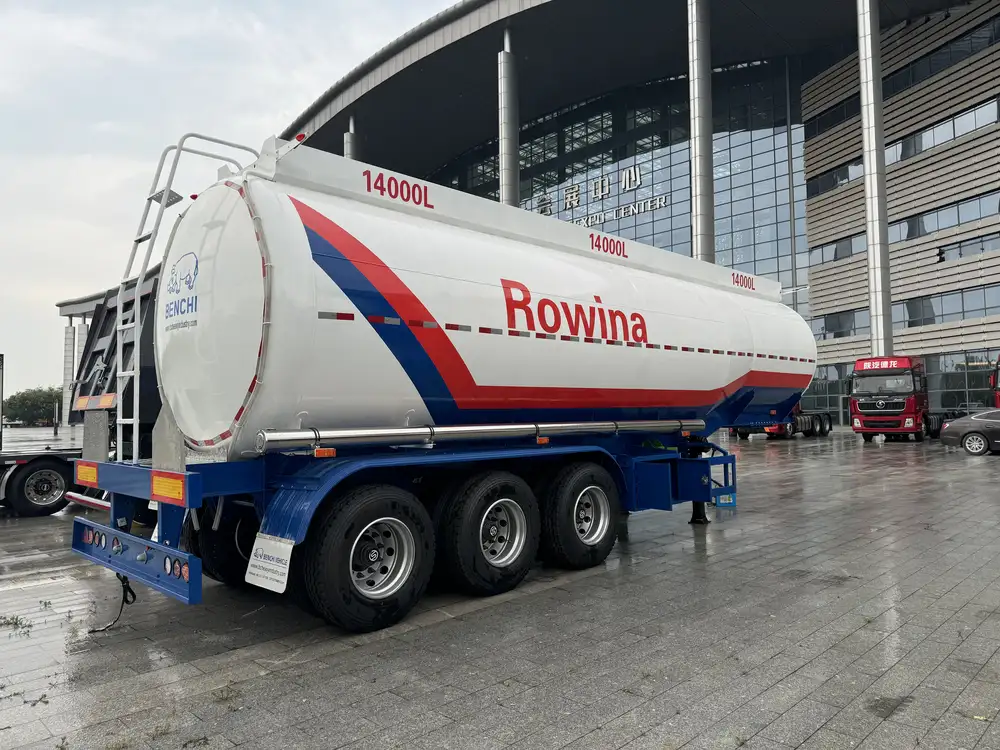When it comes to the logistics and transportation industry, few topics are as crucial as understanding the weight of semi-trucks and trailers. These colossal vehicles are the backbone of freight movement, delivering goods across vast distances. In this article, we will delve into the intricacies of semi-truck and trailer weights, addressing various aspects that directly impact operation, safety, and regulatory compliance.
Overview of Semi-Trucks and Trailers
Before diving into specific weights, we must first outline what constitutes a semi-truck and trailer. A semi-truck, more formally known as a tractor, is designed to pull cargo trailers, combining power with versatility. The trailer itself can come in various types: dry vans, refrigerated units, flatbeds, and others, each optimized for different kinds of cargo.
Key Components Influencing Weight
Tractor Weight: The tractor itself includes several components such as the engine, chassis, cab, and drive axles, all of which contribute to its overall weight. Typical weights for trucks range from 15,000 to 25,000 pounds without load.
Trailer Weight: Trailers vary widely in weight depending on their design. For instance, a standard dry van trailer usually weighs around 15,000 to 25,000 pounds, while specialized trailers (like tankers or flatbeds) may weigh more or less, depending on construction materials and design.
Payload Capacity: This refers to the maximum weight a trailer can carry safely. The payload is the difference between the truck’s gross vehicle weight rating (GVWR) and its own weight.

Total Weight of Semi-Truck and Trailer Combinations
To provide a clearer picture, it’s essential to calculate the combined weight of a semi-truck and trailer. A common combination might look like this:
| Component | Weight (lbs) |
|---|---|
| Typical Tractor | 15,000 – 25,000 |
| Typical Trailer | 15,000 – 25,000 |
| Total Weight | 30,000 – 50,000 |
However, it’s crucial to note that federal regulations dictate maximum load limits which vary by state and vehicle configuration.
Legal Weight Limits for Semi-Trucks
Interstate and Intrastate Regulations
Understanding legal weight limits is crucial for compliance within the trucking industry. Under the Federal Motor Carrier Safety Administration (FMCSA) regulations in the U.S., the following stipulations generally apply:
- Gross Vehicle Weight Rating (GVWR): This is the maximum total weight a vehicle is rated to carry, inclusive of its own weight, cargo, and passengers. The standard maximum GVWR for a truck and trailer combined is 80,000 pounds on interstate highways.
Weight Distribution: Proper distribution of weight across axles is mandated to mitigate undue stress on roads and enhance safety. Maximum axle weights typically are:
Axle Type Maximum Weight (lbs) Single Axle 20,000 Tandem Axle 34,000 Tridem Axle 42,000

Factors Affecting Weight Variability
Type of Cargo: Different cargo types have different densities, which can significantly impact the overall weight of the truck and trailer. Some common cargo densities include:
- Heavy Equipment: Can substantially exceed normal weight limits.
- Construction Materials: Heavier than typical consumer goods.
- Food Products: Generally lighter than raw materials.
Fuel Capacity: A fully fueled semi can add anywhere from 1,200 to 2,000 pounds based on tank size and fuel level.
Trailer Design: Specific trailers are constructed with materials that influence their own weight and functionality.
Importance of Weight Management
Understanding the weight of a semi-truck and trailer is not merely an academic exercise; it has real-world implications:
- Fuel Efficiency: Heavier vehicles consume more fuel. By managing weight effectively, operators can save on fuel costs significantly.
- Regulatory Compliance: Operating at or below legal weight limits helps avoid fines, potential accidents, and vehicle wear and tear.
- Safety: An overweight vehicle is more prone to tire blowouts, braking issues, and can adversely affect handling and stability.
Weight Reduction Strategies
In today’s competitive environment, finding ways to reduce vehicle weight while maintaining structural integrity can lead to considerable advantages:
Material Selection: Incorporating lighter materials such as aluminum instead of steel for trailers can lead to substantial weight savings.
Streamlined Design: Aerodynamic designs reduce drag and improve fuel efficiency, optimizing overall vehicle performance.
Precise Loading Techniques: Utilizing technology to ensure even weight distribution can prevent overloading specific axles, enhancing longevity and safety.

Interesting Weight Facts & Considerations
- The heaviest recorded semi-truck and trailer in operation can exceed 200,000 pounds under special permits for oversized loads.
- In urban settings, the weight of a semi-truck can significantly affect dynamics, necessitating greater stopping distances and influencing city planning in relation to road structures.
Conclusion
In summary, thoroughly understanding how heavy a semi-truck and trailer is, and the associated weight regulations, is critical for anyone involved in the transportation sector. With this awareness, operators can maximize efficiency, ensure compliance, and most crucially, maintain safety on the roads. From fuel efficiency strategies to ensuring proper weight distribution, addressing every facet of semi-truck and trailer weight will contribute to better operational practices and greater industry standards.
Call to Action
For manufacturers and operators alike, staying informed on weight regulations and innovative practices in weight management is not only critical for compliance but is also advantageous for efficiency and safety. Dive deeper into optimizing your fleet and explore how modern technologies can assist in achieving maximum performance without exceeding weight limits.
This comprehensive guide provides not only the factual weight information needed but also addresses user pain points such as compliance, safety, cost efficiency, and overall operational effectiveness.



